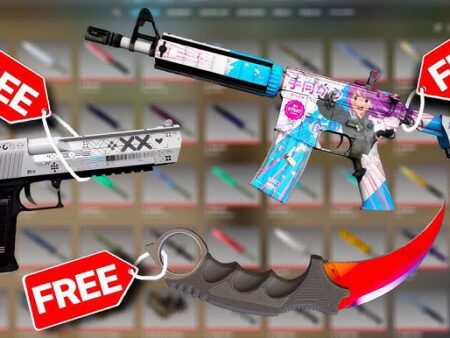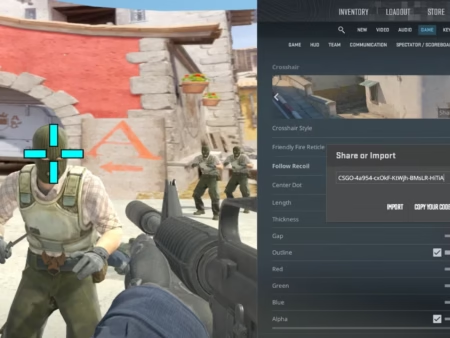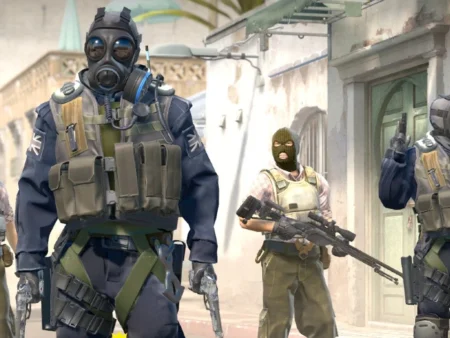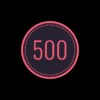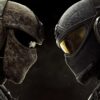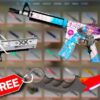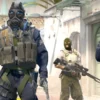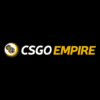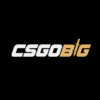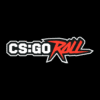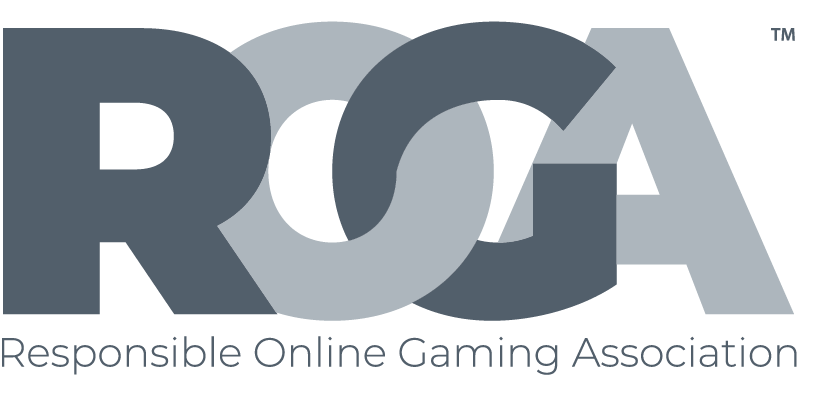Counter-Strike 2 (CS2) is more than just a video game—it’s a high-stakes competitive shooter where precision, strategy, and teamwork dictate success. Since its release, CS2 has quickly grown into a dominant force in esports, attracting millions of players worldwide. Whether you’re a newcomer from CS:GO or entirely new to the Counter-Strike franchise, getting better at CS2 requires more than just hours of gameplay. It demands a structured approach to skill-building, game understanding, and mental preparation.
In this guide, we’ll break down everything you need to know to climb the ranks in CS2. From improving aim to mastering maps, managing your economy, and thinking like a pro, this comprehensive walkthrough will help you elevate your gameplay and dominate matches consistently.
Understanding the Core Mechanics of CS2
Success in CS2 starts with mastering its fundamental mechanics. Unlike many shooters, CS2 emphasizes tactical positioning, weapon control, and strategic play over fast-paced run-and-gun action.
Movement and Positioning Basics
Movement in CS2 can make or break a round. Unlike casual shooters where sprinting and jumping are common, CS2 rewards deliberate, calculated movement. Players must learn techniques like counter-strafing, which allows you to stop instantly for more accurate shots, and silent walking, which helps you avoid alerting enemies.
Positioning is equally crucial. Good players always seek cover, control chokepoints, and avoid overexposing themselves. Understanding angles—how much of your body you show while peeking—and high ground advantages can drastically improve survival rates. Players who consistently hold smart positions can force enemies into disadvantageous fights, securing easy kills.
Mastering Shooting and Recoil Control
Each weapon in CS2 has a unique spray pattern, meaning that continuous fire will make bullets veer off target. Mastering these patterns is key to landing shots consistently. Beginners should start with weapons like the AK-47 or M4A4, practicing short bursts before progressing to full sprays.
Players must also understand tap shooting (single, precise shots) and burst firing for longer-range engagements. Headshots are incredibly rewarding in CS2, often leading to instant kills, making recoil control essential for competitive play.
Game Sense and Map Awareness
Game sense is your ability to read situations, predict enemy behavior, and make strategic decisions. This skill develops over time as you gain experience with different maps and playstyles.
Map awareness involves knowing common hiding spots, timings for rotations, and sound cues that indicate enemy movements. A well-developed game sense lets you anticipate enemy positions, avoid ambushes, and set up winning plays with your team.
Developing Effective Aiming Skills
Even with great game sense, poor aiming will hold you back. CS2 is a precision shooter where milliseconds and pixel-perfect shots determine outcomes.
Crosshair Placement Techniques
Crosshair placement is one of the most important aiming fundamentals. Instead of reacting to enemies by moving your crosshair, skilled players keep it pre-aimed at head level and aimed at likely enemy positions. This minimizes reaction time and increases accuracy.
Good crosshair placement also involves pre-firing—shooting as you peek common angles where enemies often hide. This technique can give you a split-second advantage in duels.
Aim Training Routines and Tools
Consistency in aiming comes from practice. CS2 players use aim training maps, workshop scenarios, and third-party tools like Aim Lab or Kovaak’s to refine their skills.
A strong daily routine might include:
- 10 minutes of flick shot training
- 10 minutes of recoil control exercises
- 10 minutes of tracking and crosshair adjustment drills
This structured approach ensures that muscle memory develops over time, leading to more natural and faster reactions during matches.
Tracking vs. Flick Shots – When to Use Each
Two main aiming styles dominate CS2: tracking and flick shots.
- Tracking involves smoothly following a moving target and maintaining your crosshair on it. This is best used in mid-range fights where enemies are strafing or running.
- Flick shots, on the other hand, are quick, precise movements to snap your aim onto a target instantly. Flicks are commonly used with sniper rifles like the AWP or when reacting to unexpected enemy positions.
Top players master both styles and instinctively switch based on the situation, giving them an edge in different firefights.
Learning Maps and Callouts
Maps are the backbone of CS2 strategy. Knowing layouts, callouts (location names), and common engagement areas is essential for coordinated team play and smart decision-making.
Importance of Map Knowledge
Map knowledge helps you predict enemy movement, execute site takes, and set up strong defenses. Each map has chokepoints, bomb sites, and rotation routes that dictate gameplay flow. A player who understands these elements can make better pushes, flanks, and holds, contributing significantly to team success.
Key Callouts Every Player Should Know
Effective communication relies on consistent callouts. For example, on Dust II, knowing locations like “Long,” “Catwalk,” “Mid Doors,” or “Tunnels” allows teammates to quickly understand enemy positions.
Memorizing these callouts and using them actively during matches ensures that your team responds quickly to threats and coordinates attacks effectively.
Advanced Map Strategies
Beyond basic navigation, mastering smoke placements, boost spots, and wall bangs elevates your map control. High-level play often involves fake strategies to mislead opponents, well-timed site executions, and coordinated retakes after losing control of bomb sites.
By watching professional matches and practicing utility lineups, you can develop advanced tactics that give your team a competitive edge.
Mastering Weapon Usage
CS2 offers a wide range of weapons, each with unique recoil patterns, fire rates, and strategic uses. Understanding which weapon suits your style and situation is vital for improving gameplay.
Best Weapons for Beginners
New players should start with forgiving weapons that balance accuracy, damage, and cost-effectiveness. Rifles like the AK-47 (for Terrorists) and M4A4/M4A1-S (for Counter-Terrorists) are staple choices due to their high damage and versatility.
For eco rounds or budget-friendly options, SMGs like the MP9 or pistols such as the Desert Eagle and P250 provide strong close-range capabilities without breaking the bank.
Understanding Weapon Economy
Managing your in-game money determines what weapons and utility you can buy each round. Poor economy management can force your team into disadvantageous eco rounds, making it harder to fight well-equipped enemies.
Learning when to save, force buy, or full buy ensures that your team has the right firepower and utility for critical rounds.
Advanced Weapon Handling Tips
Beyond basic shooting, advanced players practice weapon swapping, spray transfer (controlling multiple enemies in one spray), and jiggling (quick peeks to gather info).
Weapon utility—such as using the AWP for long-range control or shotguns for close corners—adds strategic depth. Skilled players adapt weapon choices based on map, economy, and team strategy, maximizing their effectiveness in every round.
Improving Communication and Teamwork
In CS2, no player wins alone—effective communication and teamwork are essential to climbing the ranks. A team that coordinates well will almost always outperform a group of highly skilled but uncoordinated individuals.
Using Voice and Text Chat Effectively
Clear and concise communication can win rounds. Players should avoid cluttering comms with unnecessary talk and instead focus on providing useful information: enemy positions, health status, planned strategies, and timing of pushes.
For example, instead of saying, “I think there’s someone over there,” a strong call would be, “One enemy in B tunnels, low HP, rotating toward mid.” This gives your team actionable information without confusion.
Voice chat is the primary method, but text chat can also be used for quick updates when microphones are unavailable or during clutch moments where silence is crucial.
Role Assignment and Coordination
Teams perform best when players know their roles. Common roles include:
- Entry Fragger: Leads attacks, takes initial duels.
- Support: Uses utility to assist pushes or holds.
- AWPer: Controls long-range engagements.
- Lurker: Flanks and disrupts enemy defense.
- In-Game Leader (IGL): Calls strategies and guides decision-making.
Proper role assignment ensures that every player contributes strategically. Teams that coordinate utility usage, execute site takes together, and trade kills efficiently often dominate matches.
Building Chemistry with Teammates
Chemistry comes from playing consistently with the same group, understanding each other’s tendencies, and adapting to strengths and weaknesses. Players should practice double peeks, crossfires, and site retakes together to build synergy.
Even in solo queue, good communication fosters mini-teams within a match, where two or three players work together for better chances of winning rounds.
Strategies for Competitive Play
CS2’s competitive matches require deep strategic understanding. Success isn’t just about shooting; it’s about outsmarting opponents and executing well-timed tactics.
T-side vs. CT-side Tactics
Terrorists (T-side) must focus on taking map control, executing site pushes, and planting the bomb. Early-round strategies involve spreading out for information or grouping for a rush.
Counter-Terrorists (CT-side) focus on holding sites, defending chokepoints, and retaking bomb plants efficiently. Successful CT play relies on good utility usage, holding crossfires, and communicating enemy pushes early.
Mastering both sides ensures that you can adapt to different match situations and exploit weaknesses in enemy setups.
Executing Proper Rushes and Splits
A rush involves overwhelming a bombsite quickly before defenders can react. It requires perfect timing, synchronized utility throws (smokes and flashes), and fast site entry.
A split push divides the team to attack a site from multiple angles simultaneously—this forces defenders to split their attention and increases attack success rates.
Practicing these executions with teammates or studying pro-level strategies can greatly improve your team’s efficiency.
Reading Enemy Plays and Countering
Experienced players don’t just stick to pre-planned strategies—they read enemy tendencies. If a team frequently pushes mid or aggressively holds bombsites, you can adjust tactics by baiting pushes, setting traps, or executing fast rotations to punish over-extensions.
Good players constantly gather information through sound cues, spotting utility usage, and watching enemy positions to develop counter-strategies during a match.
Smart Economy Management
Economy is the heartbeat of CS2 strategy. Managing money determines the weapons, armor, and utility your team has each round. Poor economic decisions can snowball into losing streaks, while smart buys create momentum.
When to Buy, Force Buy, or Eco
- Full Buy: Purchase rifles, armor, and full utility—typically done when everyone has enough money for a strong round.
- Force Buy: Spend all remaining money despite not having enough for full buy—usually a high-risk comeback tactic.
- Eco: Save money for future rounds, often using pistols only.
Smart teams coordinate their buys to avoid situations where only half the players are well-equipped, which can severely disadvantage the team.
Understanding Money Cycles
Winning and losing streaks impact your economy. After consecutive losses, CS2 provides loss bonuses to help teams recover. Skilled players understand these cycles and plan buys accordingly, avoiding reckless spending that leaves them vulnerable later.
Teams also track enemy economy, predicting when the opponent might be on an eco or forced buy, allowing for safer site takes or more aggressive plays.
Sharing Economy with Team
Sometimes, a well-funded player should drop weapons or utility to struggling teammates, ensuring the whole team has balanced firepower. Good leaders communicate when drops are needed, preventing mismatched gear that can lose rounds.
Utilizing Utility Effectively
Utility—smokes, flashes, molotovs, and grenades—is often the deciding factor in winning rounds. Poor aim can sometimes be compensated with perfect utility usage.
Essential Smokes, Flashes, and Molotovs
- Smokes: Block enemy vision, allowing safer site entries or defending bomb plants.
- Flashes: Blind enemies before pushes, reducing risk in gunfights.
- Molotovs/Incendiaries: Deny enemy positions or delay pushes.
Players should learn basic lineups for each map (e.g., smoking CT spawn on Dust II, flashing A site on Mirage). Proper utility usage prevents unnecessary deaths and creates strategic advantages.
Advanced Utility Lineups
At higher levels, players develop precise utility throws that land in specific spots to cut off defenders or flush enemies out of hiding. These lineups can turn seemingly impossible site takes into easy wins.
Studying pro matches and practicing in private servers helps you master these advanced techniques.
Timing Utility for Maximum Impact
Throwing utility too early or too late can waste resources. Skilled players coordinate timings, for example:
- Flashes thrown right before entry fraggers push
- Smokes covering rotations during a bomb plant
- Molotovs used to stall enemy retakes
Timing is everything—perfectly synchronized utility can dismantle enemy defenses and secure round victories.
Building Mental Toughness and Focus
CS2 is mentally demanding. A single mistake can cost a round, leading to frustration or “tilt.” Developing mental resilience separates average players from top performers.
Handling Tilt and Losses
Everyone loses games, but great players don’t dwell on mistakes. Instead, they analyze errors, adapt, and focus on the next round. Maintaining a positive mindset improves individual and team performance.
Techniques to handle tilt include muting toxic teammates, taking short breaks, and focusing on improvement rather than ranking.
Staying Calm Under Pressure
Clutch situations—1v2 or 1v3—require calm decision-making. Players who panic often rush plays and die quickly. Remaining calm allows you to plan movements, use sound cues, and exploit enemy mistakes to win rounds.
Breathing exercises and visualization techniques can help manage in-game stress and improve clutch performance.
Developing a Winner’s Mindset
Top CS2 players believe they can win any fight or comeback from any scoreline. This mindset drives them to stay focused, take calculated risks, and push through adversity.
Building confidence comes from consistent practice, reviewing gameplay, and celebrating small improvements over time.
Watching and Learning from Pros
One of the fastest ways to improve in CS2 is by studying those who have already mastered the game. Professional players and high-ranked streamers showcase not only mechanical skills but also advanced tactics and decision-making that can be adapted to your own gameplay.
Analyzing Pro Matches and Strategies
Watching professional CS2 matches offers insights into team coordination, map control, and utility usage. By carefully observing pro games, you can learn:
- How teams execute site takes with perfect timing
- How defenders set up crossfires and hold angles
- How pros rotate between sites and manage resources
Breaking down rounds and understanding why certain plays succeed or fail allows you to transfer that knowledge into your own matches.
Learning From Streamers and Coaches
High-level streamers often explain their thought process during gameplay, making them excellent learning resources. Many offer tips on aiming, map strategies, and economy management while demonstrating advanced mechanics live.
Hiring a coach or joining a mentorship program can also provide personalized feedback, speeding up your improvement significantly.
Adopting Pro Settings and Habits
Pros use optimized settings for maximum performance—adjusting crosshair style, sensitivity, and video configurations for better visibility and reaction times. Adopting these settings and habits, such as warming up before every match, can instantly boost your consistency and comfort in-game.
Practicing Like a Pro
Simply playing matches is not enough to get better. Professional players dedicate structured practice time to refine specific skills rather than just relying on match experience.
Daily Training Routines
A strong training regimen could look like this:
- 10 minutes of aim warm-up (flick shots and tracking)
- 10 minutes of recoil control practice
- 15 minutes of utility drills on different maps
- 15 minutes of movement training (counter-strafing, peeking)
- One to two competitive matches applying learned skills
This focused approach ensures that each aspect of your game improves steadily over time.
Aim Maps and Practice Servers
Custom aim maps allow repetitive practice in controlled environments, building muscle memory faster than regular matches. Practice servers with bot scenarios or reflex trainers also help sharpen reaction time and positioning skills.
Many top players use community servers specifically designed for headshot practice or utility lineups, making it easier to master individual skills.
Warm-Up Techniques Before Matches
Before entering competitive matches, professionals spend 15–30 minutes warming up. This might involve:
- Running through aim maps
- Practicing spray transfers
- Throwing essential utility lineups
- Playing deathmatch for live target practice
A proper warm-up improves focus and mechanical readiness, reducing early-round mistakes.
Avoiding Common Mistakes
Even experienced players fall into habits that hinder their performance. Recognizing and eliminating these mistakes can rapidly improve your gameplay.
Over-Peeking and Poor Positioning
Many players lose rounds because they peek unnecessarily or expose themselves to multiple angles. Over-peeking gives enemies free kills and wastes manpower.
Learning when to hold an angle and when to reposition safely prevents avoidable deaths and keeps your team in control of engagements.
Wasting Utility Early
Throwing smokes, flashes, or molotovs without purpose leads to trouble later in rounds. Smart players save utility for post-plant defenses, retakes, or delaying enemy pushes, ensuring maximum effectiveness when it matters most.
Ignoring Team Communication
A lack of communication or ignoring teammates’ calls often results in isolated fights and lost trades. CS2 is a team game—success comes from shared information, coordinated pushes, and collective strategies, not solo heroics.
Tracking Progress and Staying Consistent
Improvement in CS2 doesn’t happen overnight—it’s a gradual process that requires tracking progress and maintaining consistent habits.
Using Stats and Analytics Tools
Platforms like CS2 Stats, Faceit, or Leetify provide in-depth performance analytics, including kill/death ratios, headshot percentages, and map win rates. Reviewing these stats regularly highlights areas where you excel and where you need more practice.
Setting Realistic Goals
Setting achievable milestones keeps you motivated. For example:
- Increasing average headshot percentage by 5%
- Improving win rate on specific maps
- Reducing average deaths per round
Small, incremental goals are easier to achieve and compound into significant skill improvements over time.
Adapting Playstyle Over Time
As you improve, you’ll face tougher opponents who exploit predictable behavior. Continuously refining your playstyle—whether it’s changing movement patterns, adopting new utility lineups, or shifting roles within the team—ensures that you stay competitive at higher ranks.
Conclusion
Getting better at CS2 is a journey that combines mechanical skill, strategic thinking, mental toughness, and consistent practice. Unlike many shooters, success in CS2 isn’t about running and gunning—it’s about deliberate, calculated moves that outsmart opponents and give your team the edge.
By mastering core mechanics, improving aim and recoil control, understanding map strategies, managing economy, and enhancing communication, you set the foundation for higher-level play. Watching professionals, adopting structured practice routines, and avoiding common mistakes further accelerates your progress.
Most importantly, remember that improvement takes time. Don’t get discouraged by losses or setbacks. Every match is a learning opportunity. Stay consistent, keep tracking your progress, and you’ll gradually climb the ranks, becoming a formidable CS2 player capable of leading your team to victory.
FAQs
1. How long does it take to get good at CS2?
It varies depending on your current skill level, dedication, and practice routine. With focused training (aim practice, map knowledge, and strategy improvement), many players see significant progress within 2–3 months.
2. What’s the best way to improve aim in CS2?
Use aim trainers like Aim Lab or in-game workshop maps. Practice flicks, tracking, and recoil control daily. Focus on keeping your crosshair at head level and pre-aiming common enemy spots.
3. Should I play solo or with a team to improve faster?
Playing with a consistent team helps build communication and teamwork skills, but solo play can improve individual decision-making. Ideally, combine both approaches for balanced development.
4. How do professionals manage utility so effectively?
Pros learn specific lineups for each map and practice timing their smokes, flashes, and molotovs to support attacks or defenses. Watching pro matches and replicating their utility usage is a great way to learn.
5. How important is game sense compared to aiming?
Both are crucial. A player with great aim but poor game sense will often lose to a smarter opponent. Developing map awareness, timing, and strategic decision-making is just as important as landing headshots.
